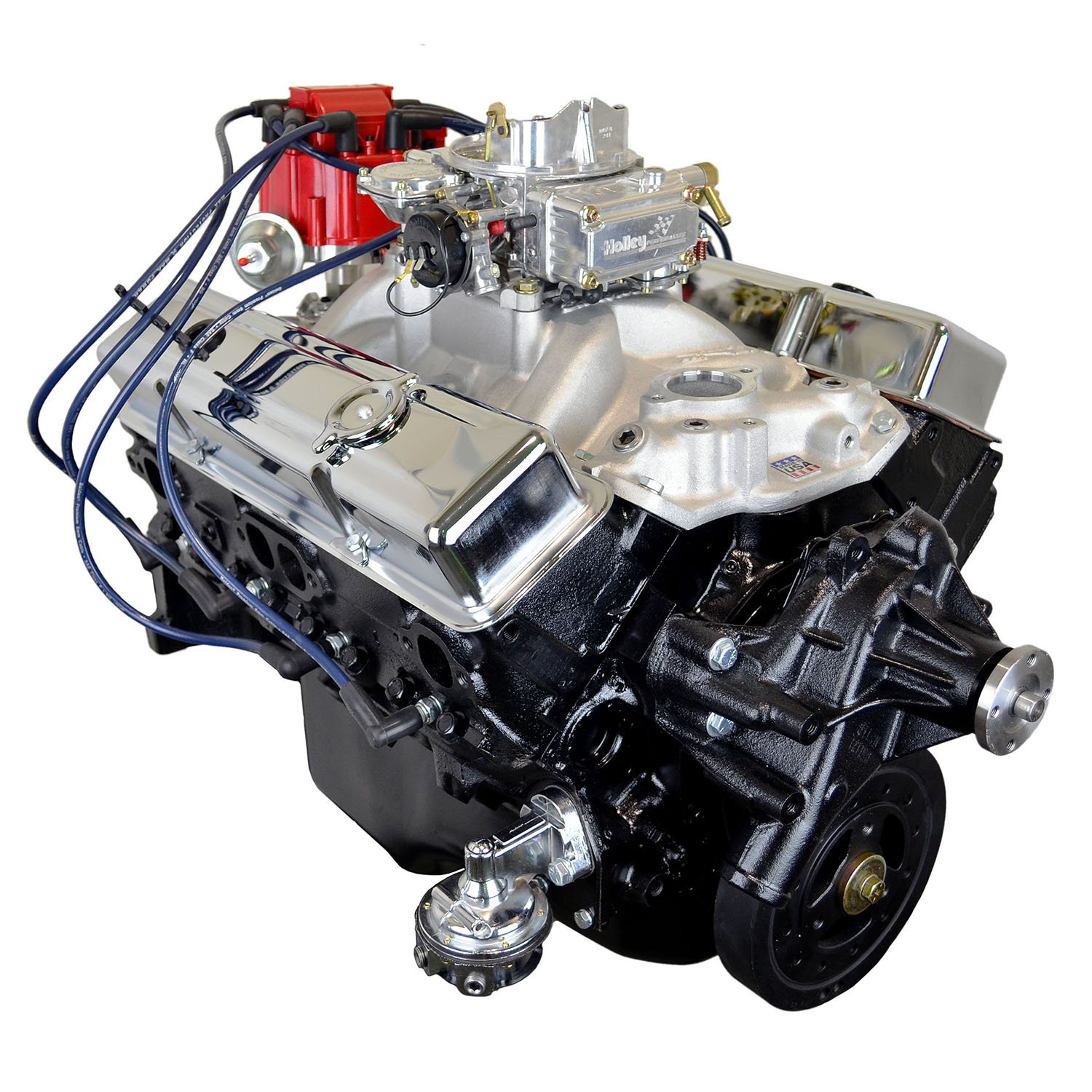Complete Engine
ATK Core Return Process
JEGS and ATK appreciate your business and want to ensure that your core return is as smooth as possible.
Please CLICK HERE for ATK Core Return Process
NOTE:
- Core return can be any Small Block Chevy 350ci engine, except 1992-1997 LT1 style engines
Engine Info
- Carburetor: Quick Fuel 680cfm vacuum secondary electric choke #793-HR-680-VS
- Balancer: 8" internal balance
- Distributor: HEI (iron gear)
- Exhaust: 1-5/8" Headers
- Flexplate/Flywheel: External balance 168 tooth 1987-Up
- Intake Manifold: Weiand Stealth dual plane #925-8150
- Firing Order: 18436572
- Fuel Pump: Holley Mechanical 110gph #510-12-327-11
- Octane: 91+
- Oil: 10W30 (Conventional / Non Synthetic) with zinc additive for first 3000 miles
- Oil Filter: Wix or K&N
- Spark Plug Gap: .035"
- Spark Plugs: Champion #RV12C or NGK #739-YR5
- Spark Plug Wires: 8mm
- Stall Converter: 2200-2500
- Timing: 34-36 Degrees
- Water Pump: OE long pump
Disclaimer: The parts listed are ATK's recommendations of parts to be used to obtain the power figures listed. Power figures can vary based on parts used by the end user. Some modifications to the vehicle may be required using these and or other aftermarket parts.
Engine Break-In Procedure
Use or break-in oil or conventional (non-synthetic) 10w30 oil with zinc additive for the first 500 miles of operation. Do not drive for long periods at any single speed, always vary your speed. Do not tow a trailer or put other heavy loads on the vehicle. It is best to avoid long periods of idling during this period. Check the engine oil and coolant levels daily.
Engines with flat tappet hydraulic cams only - Run the engine between 2,000 and 2,500 RPM's, with no-load on the engine for the first 30 minutes. Let the engine cool down completely and repeat process 2-3 more times. Do not idle the engine for any extended period at this time, this is critical to break in the camshaft.
At 500 Miles change the engine oil and filter using conventional (non-synthetic) oil with a zinc additive. Check fuel and ignition settings, adjust valves (where applicable). Drive the next 500 miles normally, without high RPM's (below 5000 RPM), hard use, or extended periods of high loading or long periods of idling.
Change the oil and oil filter again at 1,000 miles. Continue using conventional (non-synthetic) oils and zinc additive, until about 4,000 miles. At that point, you may run a quality 10w30 synthetic oil if you choose. Use of oil with zinc or a zinc additive for the life of your engine is recommended.
Specifications:
Can I order this engine with hydraulic roller cam? Can I also request a short water pump?
Will this fit in a 1967 Chevy 3/4 ton camper special. Originally came with the 327 but upgraded to a 350 back in 1988.
Will this fit a 1970 Chevrolet CST pickup with 350 engine with AC and automatic transmission ?
What starter would you use on the 291 PC ATK 350 Chevy small block, 330 hp 380 torque?
Will this engine work for my 1984 Z28? I'd like to swap the 305 for this 350. If not, could you provide any suggestions on a good swap, 305 or 350......... Thank You
will this fit my 88 c4 corvette with stock transmission ?
Will this work in my 75 Corvette?
Will this bolt into a 1965 el camino
Motor Vehicles
WARNING: Motor vehicles contain fuel, oils and fluids, battery posts, terminals and related accessories which contain lead and lead compounds and other chemicals known to the State of California to cause cancer, birth defects and other reproductive harm. These chemicals are found in vehicles, vehicle parts and accessories, both new and as replacements. When being serviced, these vehicles generate used oil, waste fluids, grease, fumes and particulates, all known to the State of California to cause cancer, birth defects, and reproductive harm.
Tools:
WARNING: Some dust created by power sanding, sawing, grinding, drilling, and other construction activities contains chemicals known to the State of California to cause cancer and birth defects or other reproductive harm. Some examples of these chemicals are: lead from lead-based paints, crystalline silica from bricks and cement and other masonry products, and arsenic and chromium from chemically treated lumber. Your risk from exposure to these chemicals varies, depending on how often you do this type of work. To reduce your exposure, work in a well-ventilated area and with approved safety equipment, such as dust masks that are specially designed to filter out microscopic particles.
Electrical Cords
WARNING: The wires of these products contain chemicals known to the State of California to cause cancer and birth defects or other reproductive harm. Wash hands after handling.




